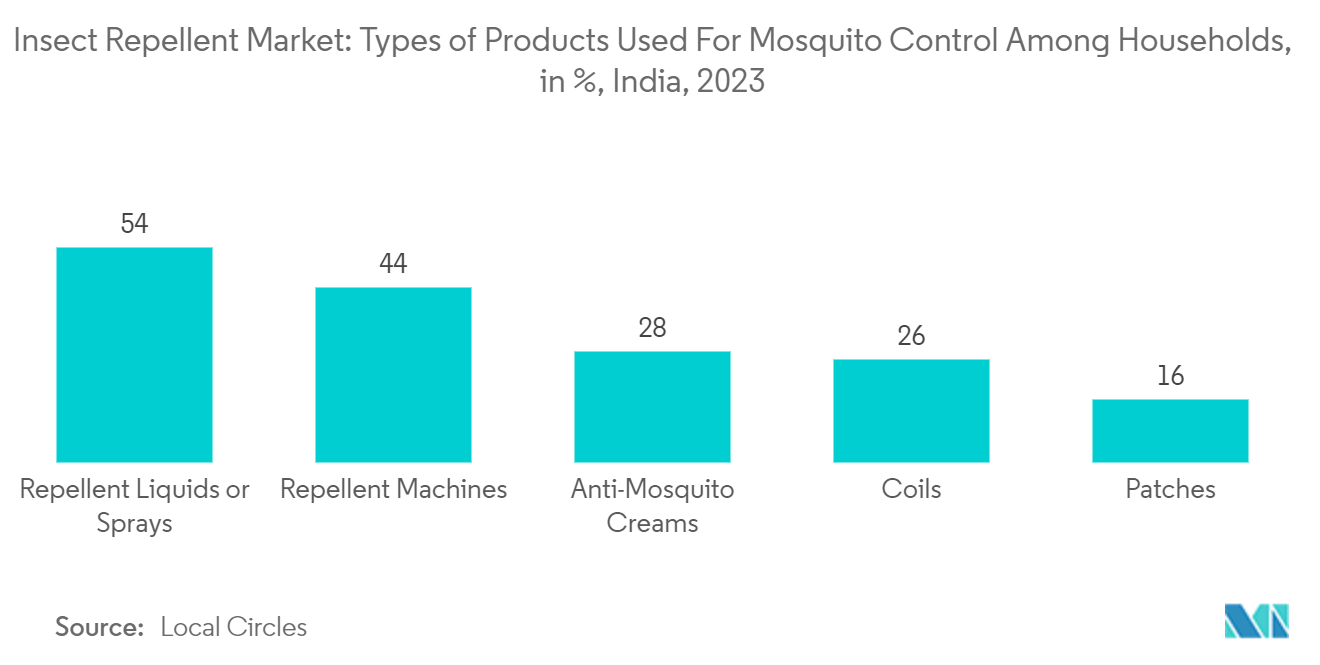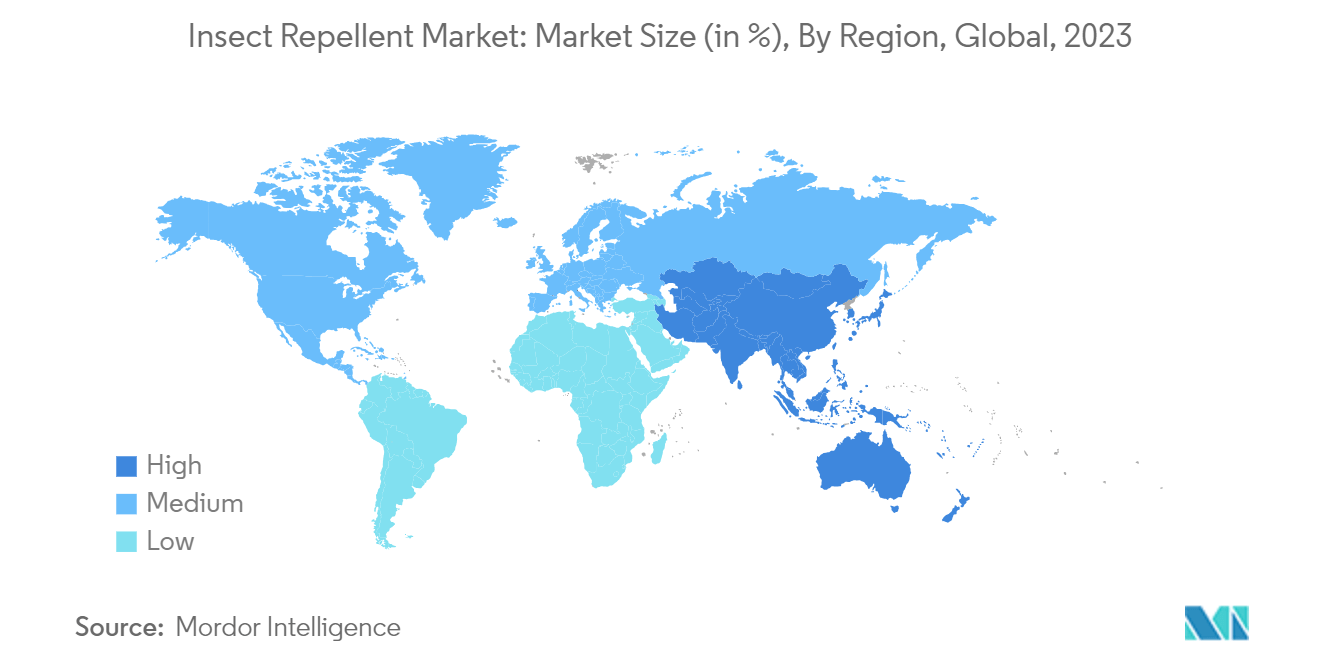Market Trends of Insect Repellent Industry
Surge in Product Innovations Propelling the Market
Product innovation in insect repellents has been driven by the need for more effective, long-lasting, and user-friendly solutions, as well as increasing demand for safer and more environmentally friendly options. As a result, manufacturers are continually refining and improving the formulation of insect repellents to enhance their efficacy and safety. This includes the development of new active ingredients, such as picaridin, IR3535, and oil of lemon eucalyptus (OLE), as well as the optimization of existing ingredients like DEET and permethrin. For instance, in May 2023, Grand Tongo, an innovator in consumer products, unveiled the launch of Town & Jungle Protection insect repellent. As per the brand’s claim, this new collection featured a DEET alternative, a picaridin-based insect repellent that repels bugs. In addition, the brand stated that picaridin is an active ingredient that is gentle on the skin, non-greasy, and virtually odorless, making it an ideal choice for those who want effective protection without the drawbacks associated with traditional DEET-based repellents.
Furthermore, there is growing consumer demand for insect repellents made from natural and plant-based ingredients, perceived as safer and more environmentally friendly alternatives to synthetic chemicals. Innovations in botanical extracts, essential oils, and herbal formulations offer effective protection against insects while appealing to eco-conscious consumers. In response, manufacturers are developing insect repellents with reduced environmental impact, using biodegradable ingredients and sustainable sourcing practices. For instance, in June 2022, STEM, owned by S.C. Johnson, introduced an innovative new line of pest control products, including STEM Bug Repellent Spray and STEM Bug Repellent Wipes. According to the brand's statement, the STEM Bug Repellent Spray is crafted with an essential oil blend specifically formulated to deter mosquitoes. Furthermore, the brand affirms that the STEM Bug Repellent Wipes utilize plant-derived active components and are suitable for children (aged six months and above) to fend off mosquitoes. This versatility makes these wipes ideal for personal use or use in camping settings, offering comprehensive protection against insects.

Increased Demand for Insect Repellents from Asia-Pacific
China represents the largest market for insect repellents among Asia-Pacific countries as it is the most populous regional country, and its consumers have high disposable incomes, growing awareness, and improved living standards, which, along with the affordable pricing of repellents, has increased their penetration among household goods. All these factors cumulatively augment the sales of the product. Moreover, household insects like flies, termites, bed bugs, ants, and cockroaches are very common in China. The use of insect repellants in usable forms like sprays, vaporizers, chalks, and powders has proliferated sales of these products in Chinese homes.
In India, people’s growing awareness and rising health concerns, along with increased household incomes and affordable product pricing, have improved insect repellents' penetration in homes. Furthermore, various ad campaigns, government initiatives, and innovations in new products have been driving the market studied. For instance, in May 2023, Mortein, Reckitt’s household insect-repellent brand, and DENTSU CREATIVE India collaborated to launch their new initiative, ‘Suraksha Ka Teeka,’ against malaria in Bareilly, India. The awareness program was launched to leverage the everyday habit of applying ‘teeka’ to educate consumers on protection from vector-borne diseases.
The launch of various programs like Swacch Bharat Abhiyaan in India has also increased the importance of hygiene and cleanliness among people, which further improved market growth. For instance, the incidences of malaria caused by mosquitoes have reduced significantly. Insect repellents in the coil form are the most popular products in the region because they are cost-effective and available across all retail channels. Among the rural areas of the Asia-Pacific countries, offline distribution channels such as convenience stores are more popular.


